- 150shares
- 150
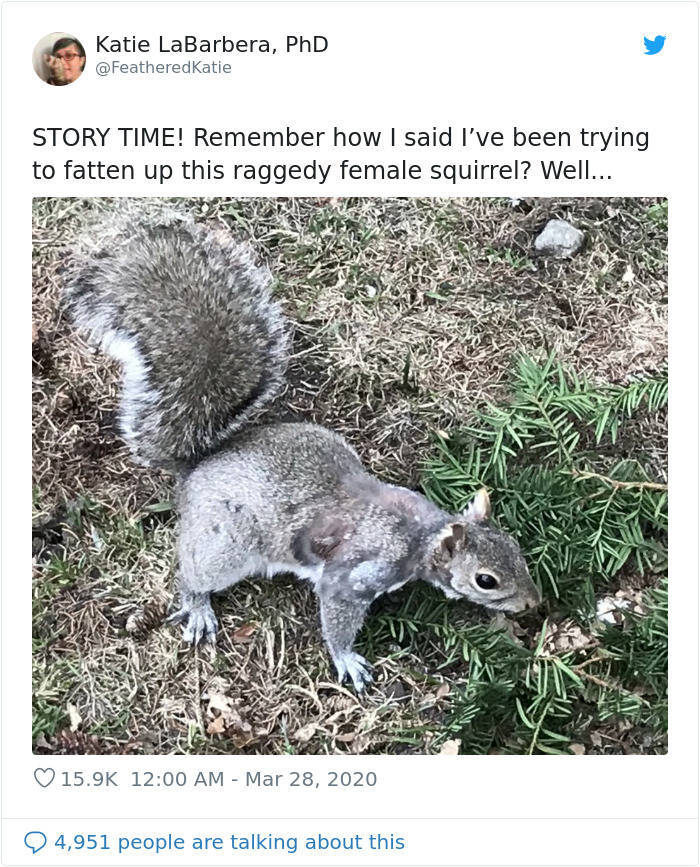
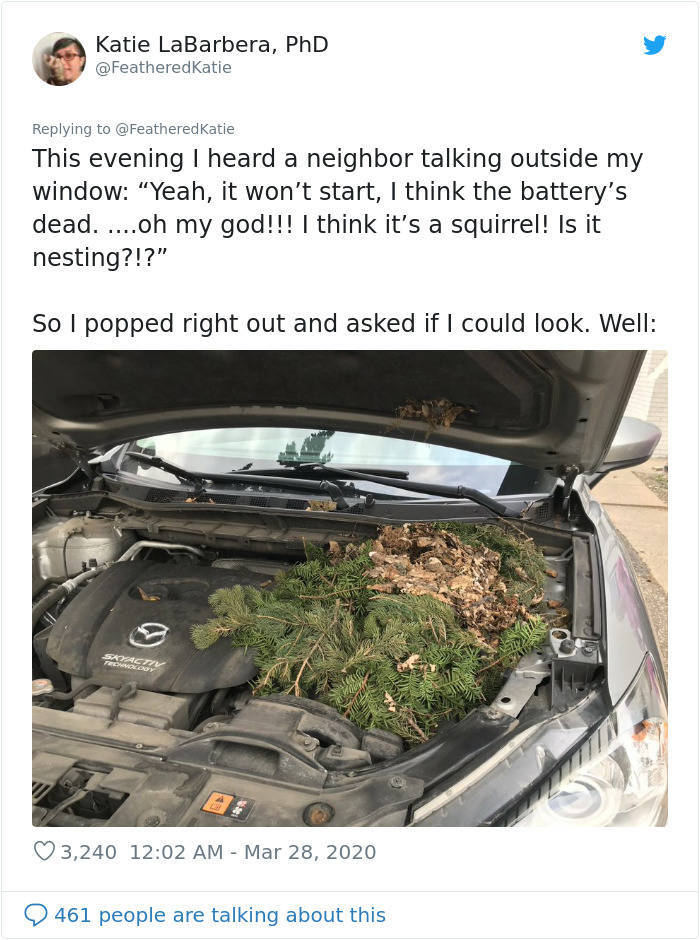
Don’t let the first impression fool you. Even though squirrels build their nests with whatever they can find, the actual construction is more complex than it might appear. Squirrels usually begin the process by weaving together a base of twigs to form a “basket” that holds the foundation of the nest. Then, they collect soft, compressible materials like wet leaves or moss. Next, squirrels will weave a second, outer net of twigs around this material to keep it compressed and will fill in gaps with more leaves or soft material.
In order to follow this blueprint, squirrels require rigid, soft, sturdy, and pliable materials. They will collect twigs, branches, leaves, moss, paper, garbage, vines, and pretty much anything else they can use. Squirrels are constantly on the lookout for these valuable building materials just like they never stop searching for food.
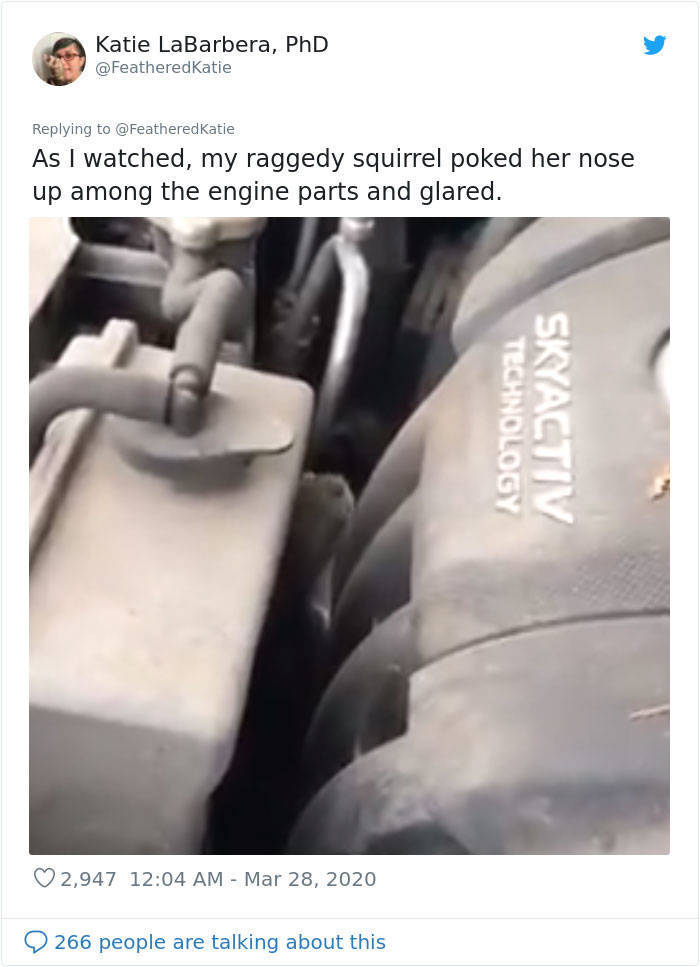
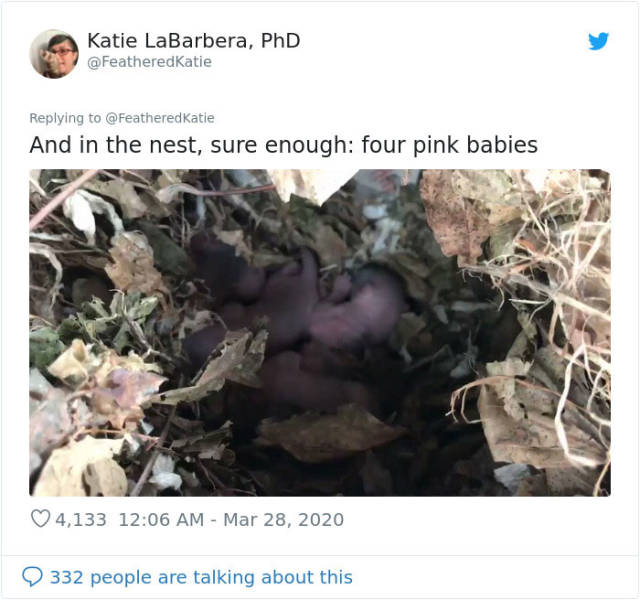
LaBarbera first noticed the squirrel because she looked scrawny and had big patches of fur missing, making her easily identifiable. “She often hung out by the tree outside my apartment window, and under a car parked right next to the tree, which in retrospect makes sense,” the biologist told. “I had begun leaving sunflower seeds out for her because she seemed like she could use the food.”
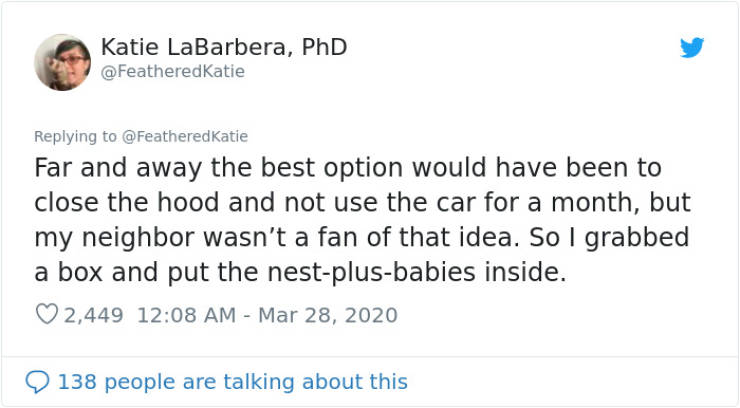
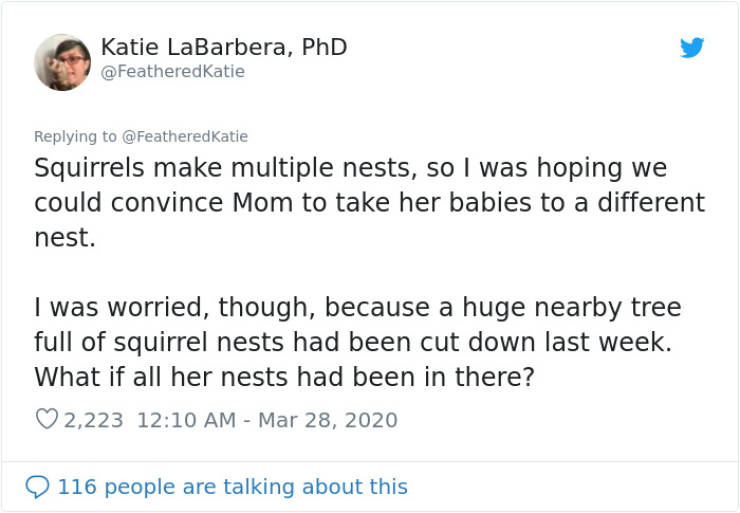
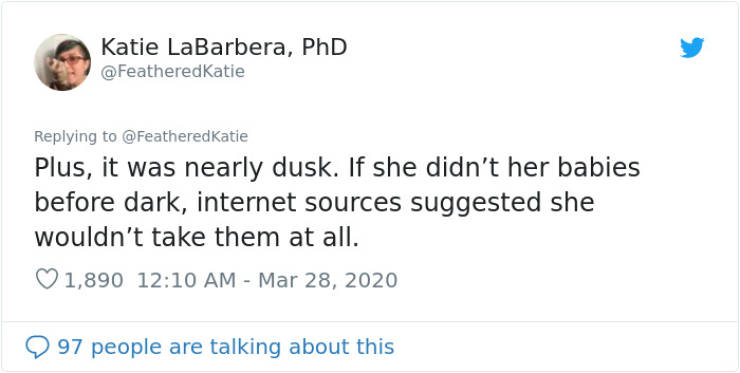
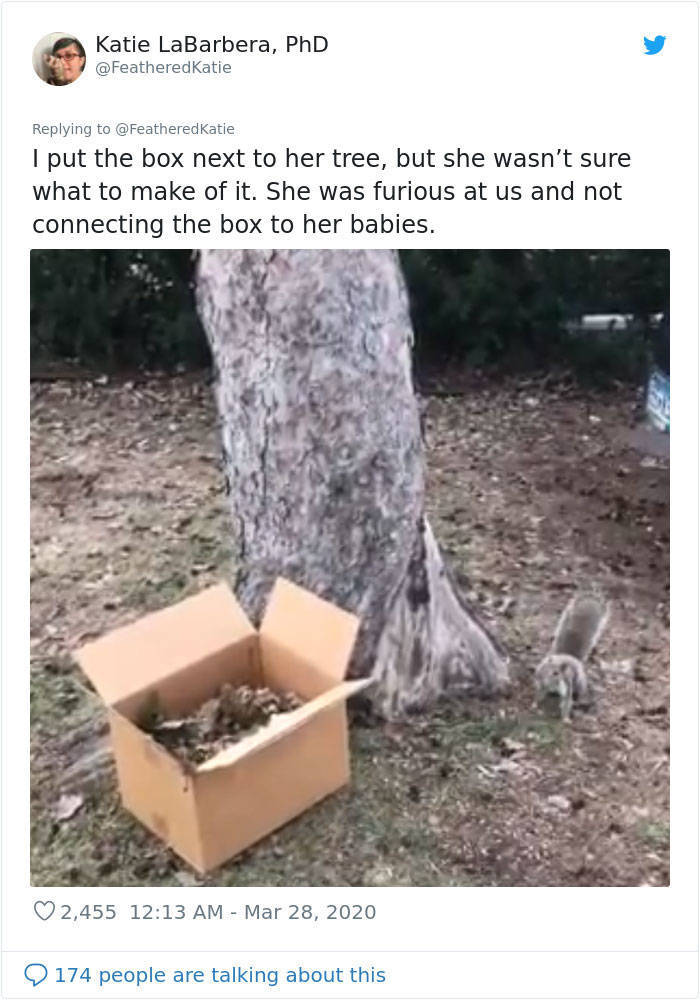
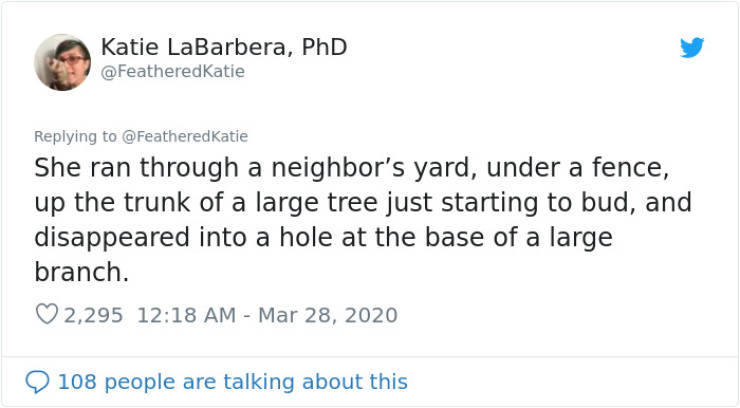
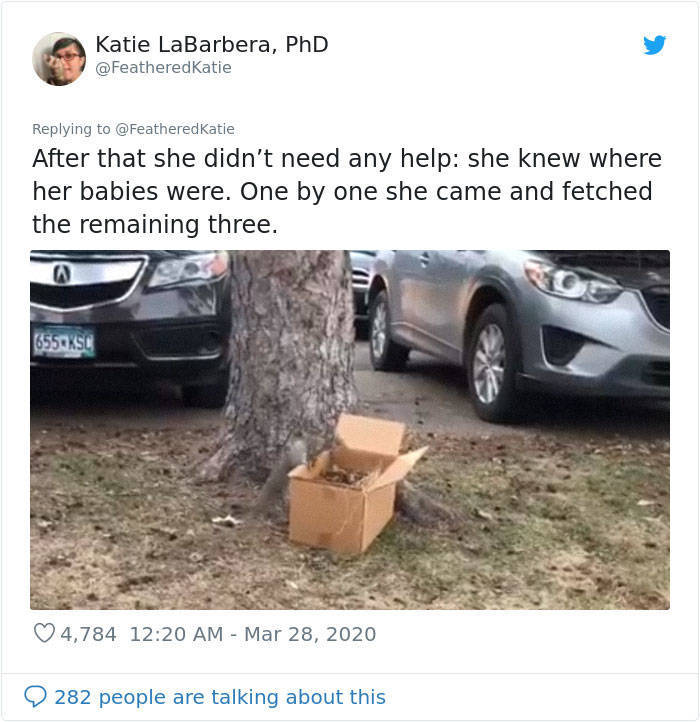
Chances are, the mom already had somewhere to take her babies. Since squirrels are constantly on the move, going from bird feeder to bird feeder and even from yard to yard, it’s common for them to have second and third nests located near their main home at varying distances. Squirrels use these additional nests in an emergency situation, for example, when they need to hide from a predator, store extra food, or simply when they get exhausted and want to have a little rest.
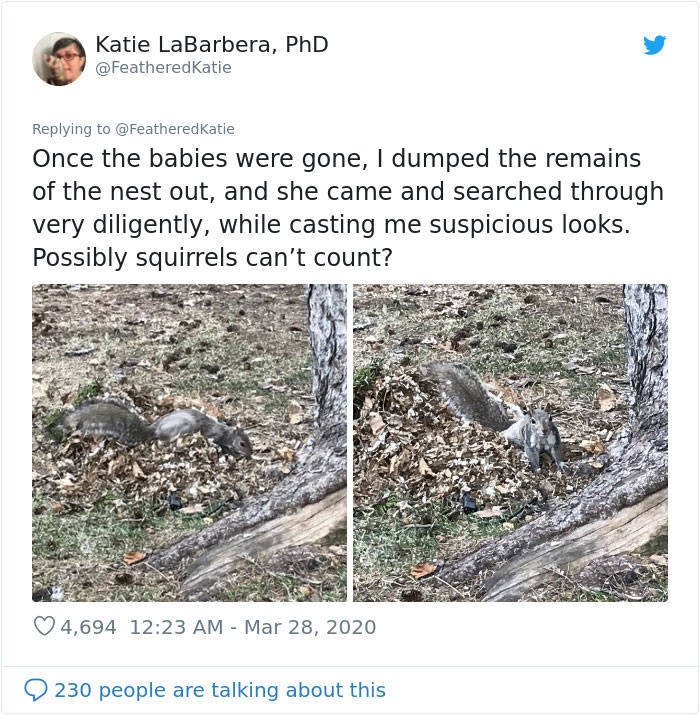
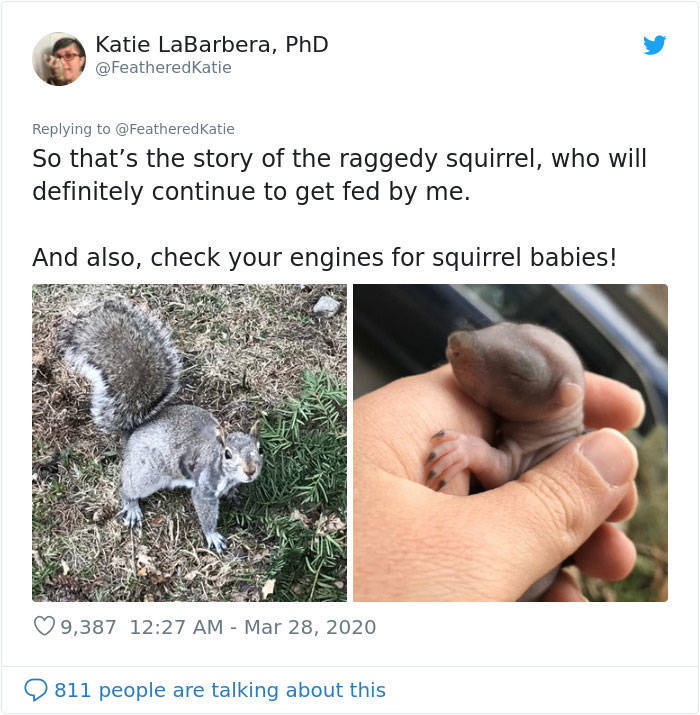
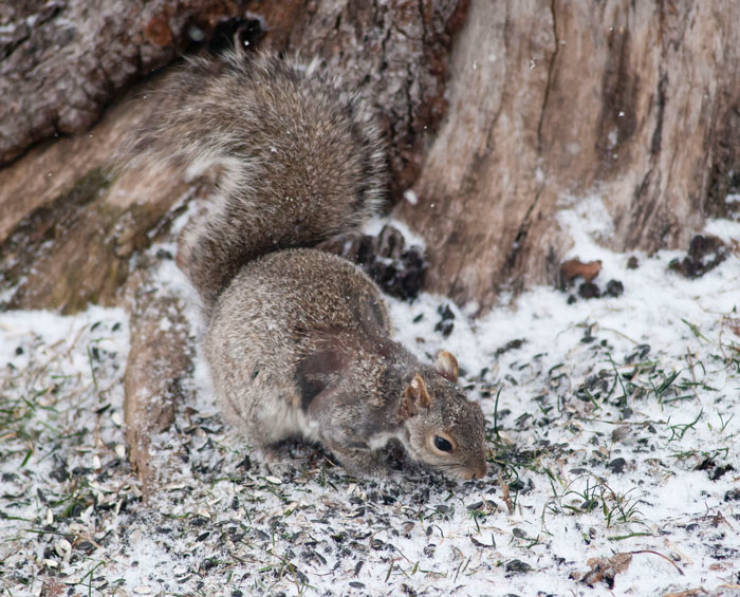
Now that everyone’s safe, LaBarbera has a few takeaways to share. “Check under your car hood if you leave it parked somewhere for a week, or see a squirrel hanging out near it!” she said.
The woman highlighted that she has also heard a lot of stories of people finding kittens under car hoods, so it’s not just the squirrels we should look out for.
“If you find a baby animal, look up a wildlife rehabilitation hospital’s website for a number to call to ask for advice before you interfere,” LaBarbera advised. “Often what’s needed is just to give the parents time to take care of the situation themselves, as the squirrel did here. And, this event reminded me of how awesome animal moms can be: the squirrel mom was very brave, and in the video when I put the baby on the ground and she finds him, you can hear her make a little squirrel purr!”
LaBarbera took a few more photos of the momma squirrel
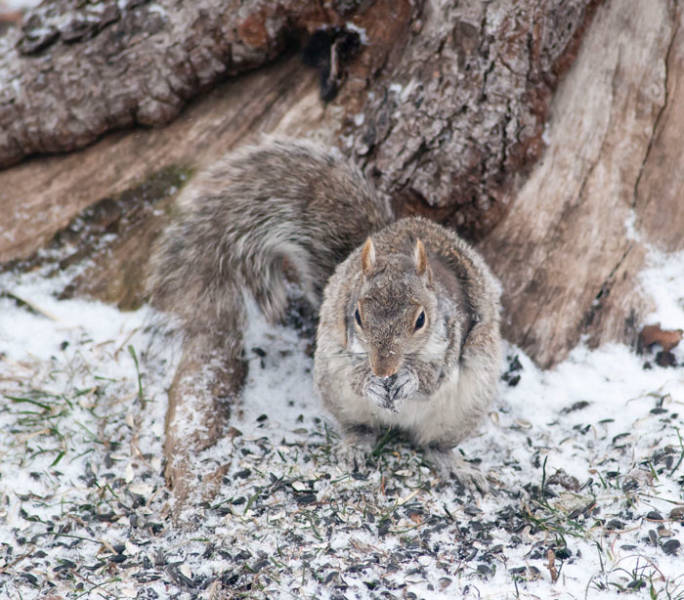
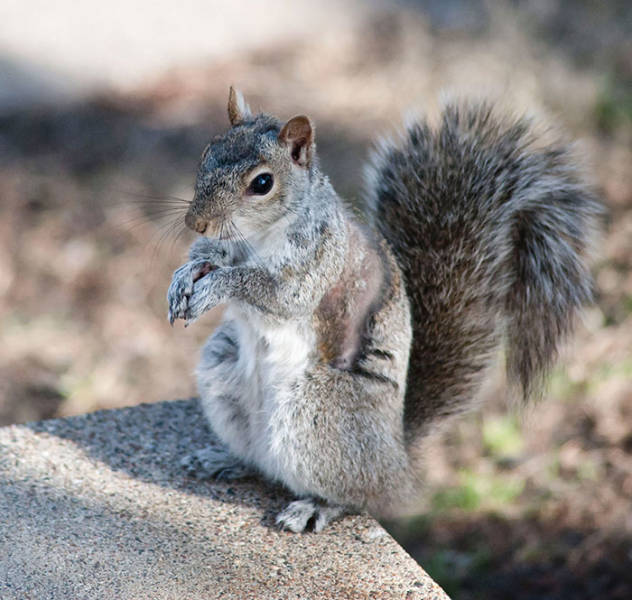
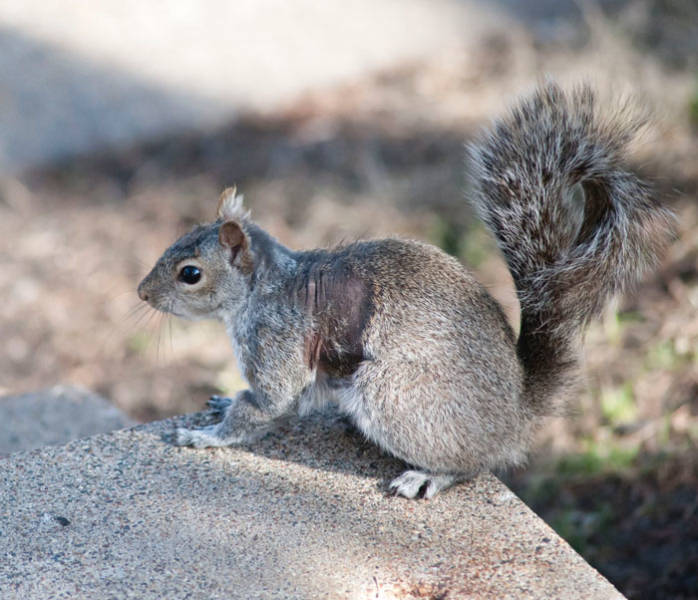
Even after the rescue, LaBarbera has been running into the squirrel mom. “[I] kept feeding the squirrel for several weeks, through two periods of snow (Minnesota spring!); eventually my neighbors complained about me attracting all the neighborhood squirrels, so I stopped.”
However, she managed to periodically photograph the critter throughout that time and noticed the results of all the care she’s given her. “Lately, it’s gotten hard to tell if I’m seeing her because her fur has grown back so much that she’s hard to distinguish. I do know where her new nest is, and I’m eagerly keeping an eye out, hoping to see the babies when they emerge.”
And chatted with her followers

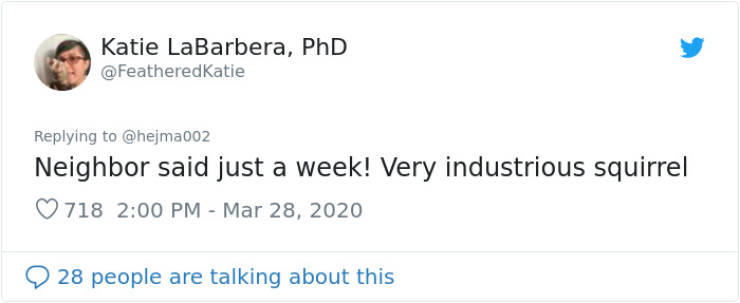
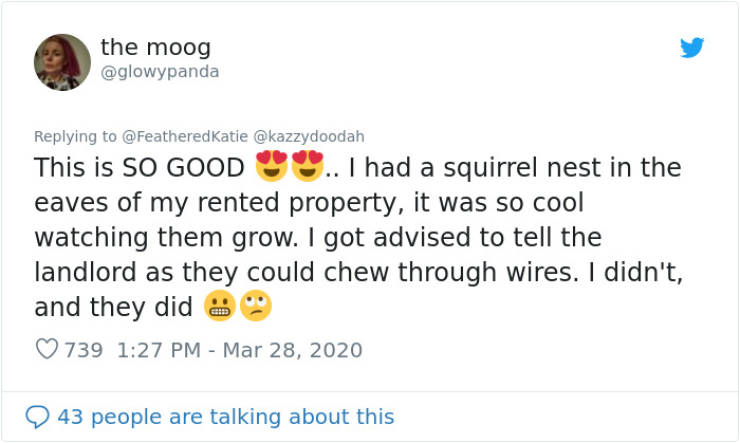


One Twitter user pointed out that LaBarbera could have avoided handling the babies if she had looked up baby squirrel cries on YouTube and just played those to attract the mother. “This would have been better,” the rescuer said. “I recommend people do that if they encounter this situation! Also, some general advice if you like your local urban wildlife: keep cats indoors; don’t use glue/sticky traps or rat poison; if you want to feed them, look up what foods are nutritious for them – bread isn’t good because it doesn’t have much protein or fat.”
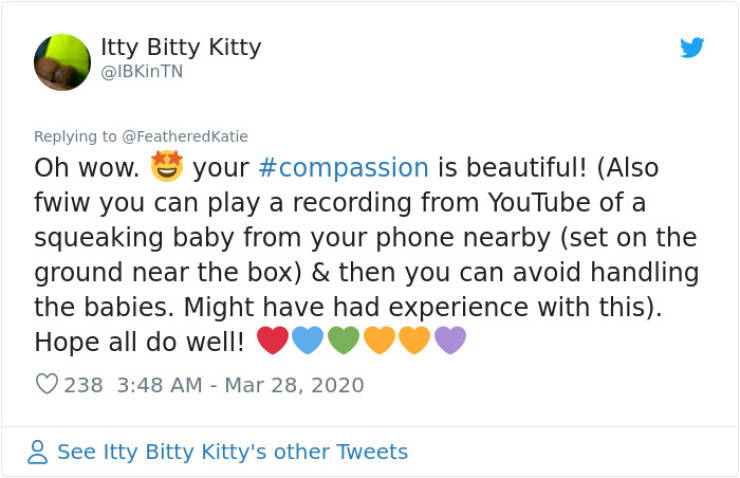
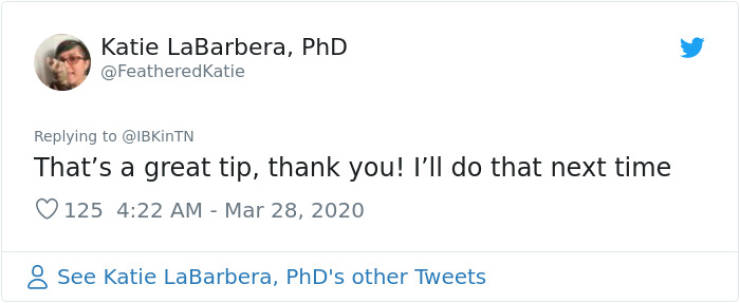
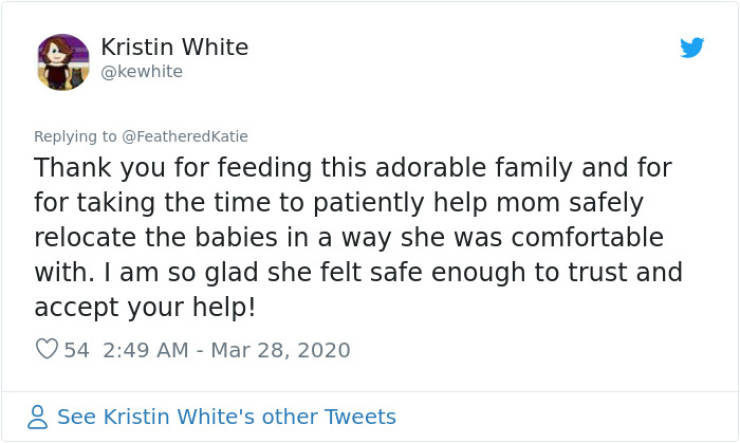

- 150shares
- 150
 Barnorama All Fun In The Barn
Barnorama All Fun In The Barn